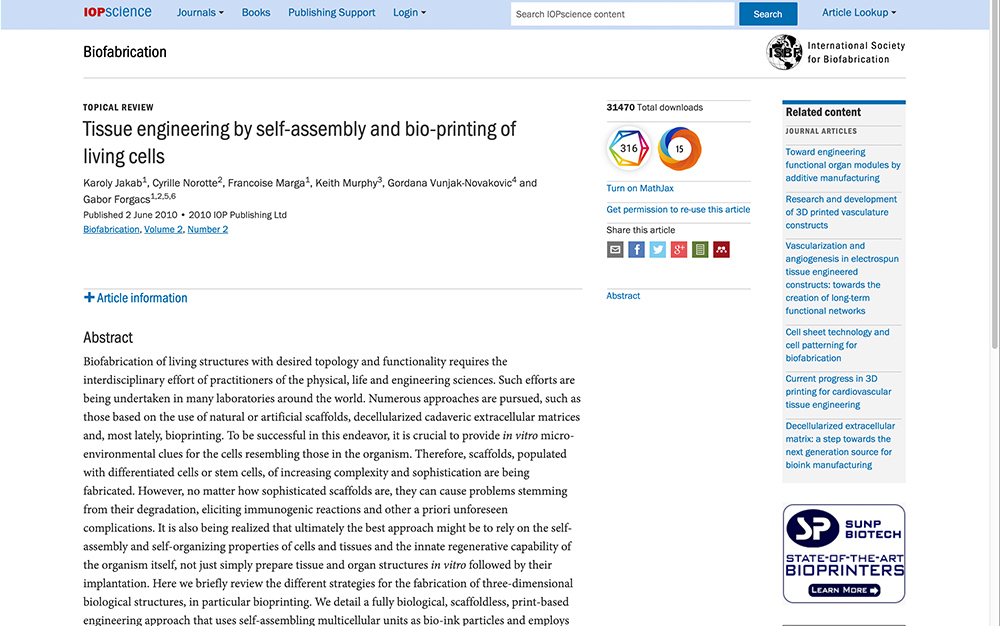Tissue engineering by self-assembly and bio-printing of living cells
Publication Summary:
Biofabrication of living structures with desired topology and functionality requires the interdisciplinary effort of practitioners of the physical, life and engineering sciences. Such efforts are being undertaken in many laboratories around the world. Numerous approaches are pursued, such as those based on the use of natural or artificial scaffolds, decellularized cadaveric extracellular matrices and, most lately, bioprinting. To be successful in this endeavor, it is crucial to provide in vitro micro-environmental clues for the cells resembling those in the organism. Therefore, scaffolds, populated with differentiated cells or stem cells, of increasing complexity and sophistication are being fabricated. However, no matter how sophisticated scaffolds are, they can cause problems stemming from their degradation, eliciting immunogenic reactions and other a priori unforeseen complications. It is also being realized that ultimately the best approach might be to rely on the self-assembly and self-organizing properties of cells and tissues and the innate regenerative capability of the organism itself, not just simply prepare tissue and organ structures in vitro followed by their implantation. Here we briefly review the different strategies for the fabrication of three-dimensional biological structures, in particular bioprinting. We detail a fully biological, scaffoldless, print-based engineering approach that uses self-assembling multicellular units as bio-ink particles and employs early developmental morphogenetic principles, such as cell sorting and tissue fusion.
View Publication
